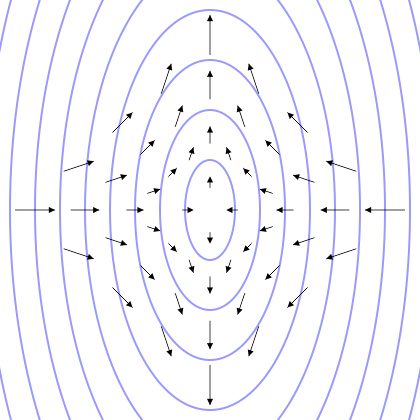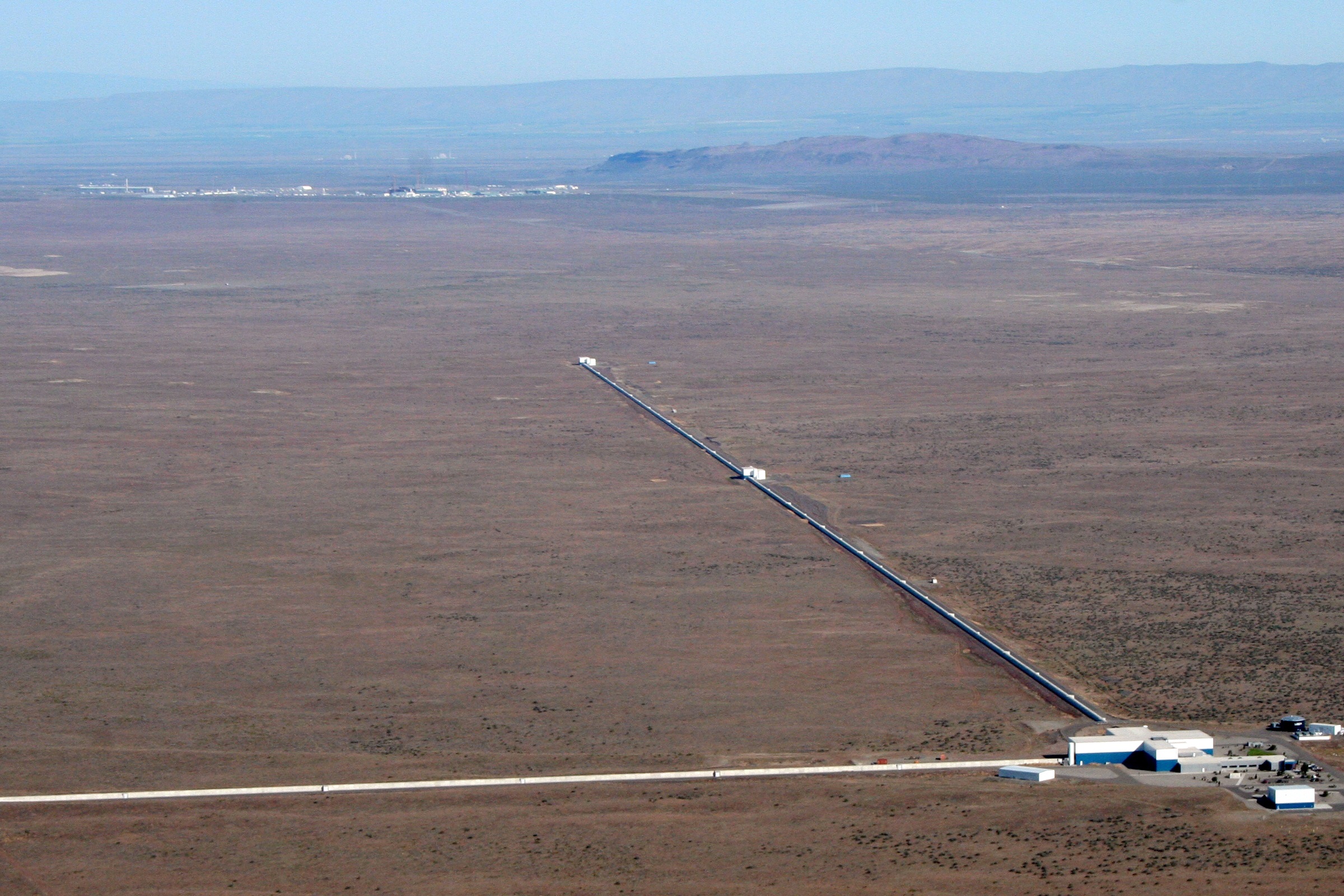|
Auriga
AURIGA (''Antenna Ultracriogenica Risonante per l'Indagine Gravitazionale Astronomica'') is an ultracryogenic resonant bar gravitational wave detector in Italy. It is at the Laboratori Nazionali di Legnaro of the Istituto Nazionale di Fisica Nucleare, near Padova. It is being used for research into gravitational waves and quantum gravity. When the oscillator gets hit with a burst of gravitational waves, it will excite the oscillator and it will vibrate for a time span longer than the duration of the gravitational wave burst. This allows for the extraction of the signal from the detector. See also * LIGO * Weber bar Weber (, or ; German: ) is a surname of German origin, derived from the noun meaning " weaver". In some cases, following migration to English-speaking countries, it has been anglicised to the English surname 'Webber' or even 'Weaver'. Notable pe ... References Astronomical observatories in Italy Gravitational-wave telescopes {{observatory-stub ... [...More Info...] [...Related Items...] OR: [Wikipedia] [Google] [Baidu] |
Laboratori Nazionali Di Legnaro
The Laboratori Nazionali di Legnaro (Legnaro National Laboratories, LNL) is one of the four major research centers of the Italian National Institute for Nuclear Physics (INFN). The primary focus of research at this laboratory is in the fields of nuclear physics and nuclear astrophysics, where five accelerators are currently used. It is one of the most important facilities in Italy for research in these fields. The main future project of the laboratory is the Selective Production of Exotic Species (SPES), in which various radionuclides will be produced for research and medicinal purposes. History The establishment of a laboratory in Legnaro was first suggested in 1956 to promote nuclear physics research in Italy in addition to previous work in particle physics. In 1959, the University of Padua decided that a new laboratory would be built near Legnaro, rather than install new equipment in older facilities. The laboratory was founded in 1960 by physicist Antonio Rostagni and resear ... [...More Info...] [...Related Items...] OR: [Wikipedia] [Google] [Baidu] |
Gravitational Wave Detector
A gravitational-wave detector (used in a gravitational-wave observatory) is any device designed to measure tiny distortions of spacetime called gravitational waves. Since the 1960s, various kinds of gravitational-wave detectors have been built and constantly improved. The present-day generation of laser interferometers has reached the necessary sensitivity to detect gravitational waves from astronomical sources, thus forming the primary tool of gravitational-wave astronomy. The first direct detection of gravitational waves made in 2015 by the Advanced LIGO observatories, a feat which was awarded the 2017 Nobel Prize in Physics. Challenge The direct detection of gravitational waves is complicated by the extraordinarily small effect the waves produce on a detector. The amplitude of a spherical wave falls off as the inverse of the distance from the source. Thus, even waves from extreme systems such as merging binary black holes die out to a very small amplitude by the time they ... [...More Info...] [...Related Items...] OR: [Wikipedia] [Google] [Baidu] |
Ars Technica
''Ars Technica'' is a website covering news and opinions in technology, science, politics, and society, created by Ken Fisher and Jon Stokes in 1998. It publishes news, reviews, and guides on issues such as computer hardware and software, science, technology policy, and video games. ''Ars Technica'' was privately owned until May 2008, when it was sold to Condé Nast Digital, the online division of Condé Nast Publications. Condé Nast purchased the site, along with two others, for $25 million and added it to the company's ''Wired'' Digital group, which also includes ''Wired'' and, formerly, Reddit. The staff mostly works from home and has offices in Boston, Chicago, London, New York City, and San Francisco. The operations of ''Ars Technica'' are funded primarily by advertising, and it has offered a paid subscription service since 2001. History Ken Fisher, who serves as the website's current editor-in-chief, and Jon Stokes created ''Ars Technica'' in 1998. Its purpose was ... [...More Info...] [...Related Items...] OR: [Wikipedia] [Google] [Baidu] |
Istituto Nazionale Di Fisica Nucleare
The Istituto Nazionale di Fisica Nucleare (INFN; "National Institute for Nuclear Physics") is the coordinating institution for nuclear, particle, theoretical and astroparticle physics in Italy. History INFN was founded on 8 August 1951, to further the nuclear physics research tradition initiated by Enrico Fermi in Rome, in the 1930s. The INFN collaborates with CERN, Fermilab and various other laboratories in the world. In recent years it has provided important contributions to grid computing. During the latter half of the 1950s, the INFN designed and constructed the first Italian electron accelerator—the electron synchrotron developed in Frascati. In the early 1960s, it also constructed in Frascati the first ever electron-positron collider (ADA - ''Anello Di Accumulazione''), under the scientific leadership of Bruno Touschek. In 1968, Frascati began operating ADONE (''big'' AdA), which was the first high-energy particle collider, having a beam energy of 1.5 GeV. During the sa ... [...More Info...] [...Related Items...] OR: [Wikipedia] [Google] [Baidu] |
Padova
Padua ( ; it, Padova ; vec, Pàdova) is a city and ''comune'' in Veneto, northern Italy. Padua is on the river Bacchiglione, west of Venice. It is the capital of the province of Padua. It is also the economic and communications hub of the area. Padua's population is 214,000 (). The city is sometimes included, with Venice (Italian ''Venezia'') and Treviso, in the Padua-Treviso-Venice Metropolitan Area (PATREVE) which has a population of around 2,600,000. Padua stands on the Bacchiglione, Bacchiglione River, west of Venice and southeast of Vicenza. The Brenta River, which once ran through the city, still touches the northern districts. Its agricultural setting is the Venetian Plain (''Pianura Veneta''). To the city's south west lies the Colli Euganei, Euganaean Hills, praised by Lucan and Martial, Petrarch, Ugo Foscolo, and Percy Bysshe Shelley, Shelley. Padua appears twice in the UNESCO World Heritage List: for its Botanical Garden of Padua, Botanical Garden, the most anc ... [...More Info...] [...Related Items...] OR: [Wikipedia] [Google] [Baidu] |
Gravitational Waves
Gravitational waves are waves of the intensity of gravity generated by the accelerated masses of an orbital binary system that Wave propagation, propagate as waves outward from their source at the speed of light. They were first proposed by Oliver Heaviside in 1893 and then later by Henri Poincaré in 1905 as waves similar to Electromagnetic radiation, electromagnetic waves but the gravitational equivalent. Gravitational waves were later #History, predicted in 1916 by Albert Einstein on the basis of his General relativity, general theory of relativity as ripples in spacetime. Later he refused to accept gravitational waves. Gravitational waves transport energy as gravitational radiation, a form of radiant energy similar to electromagnetic radiation. Newton's law of universal gravitation, part of classical mechanics, does not provide for their existence, since that law is predicated on the assumption that Speed of gravity, physical interactions propagate instantaneously (at infinite ... [...More Info...] [...Related Items...] OR: [Wikipedia] [Google] [Baidu] |
Quantum Gravity
Quantum gravity (QG) is a field of theoretical physics that seeks to describe gravity according to the principles of quantum mechanics; it deals with environments in which neither gravitational nor quantum effects can be ignored, such as in the vicinity of black holes or similar compact astrophysical objects, such as neutron stars. Three of the four fundamental forces of physics are described within the framework of quantum mechanics and quantum field theory. The current understanding of the fourth force, gravity, is based on Albert Einstein's general theory of relativity, which is formulated within the entirely different framework of classical physics. However, that description is incomplete: describing the gravitational field of a black hole in the general theory of relativity leads physical quantities, such as the spacetime curvature, to diverge at the center of the black hole. This signals the breakdown of the general theory of relativity and the need for a theory that goes b ... [...More Info...] [...Related Items...] OR: [Wikipedia] [Google] [Baidu] |
LIGO
The Laser Interferometer Gravitational-Wave Observatory (LIGO) is a large-scale physics experiment and observatory designed to detect cosmic gravitational waves and to develop gravitational-wave observations as an astronomical tool. Two large observatories were built in the United States with the aim of detecting gravitational waves by laser interferometry. These observatories use mirrors spaced four kilometers apart which are capable of detecting a change of less than one ten-thousandth the charge diameter of a proton. (that is, to Proxima Centauri at ). The initial LIGO observatories were funded by the United States National Science Foundation (NSF) and were conceived, built and are operated by Caltech and MIT. They collected data from 2002 to 2010 but no gravitational waves were detected. The Advanced LIGO Project to enhance the original LIGO detectors began in 2008 and continues to be supported by the NSF, with important contributions from the United Kingdom's Science ... [...More Info...] [...Related Items...] OR: [Wikipedia] [Google] [Baidu] |
Weber Bar
Weber (, or ; German: ) is a surname of German origin, derived from the noun meaning " weaver". In some cases, following migration to English-speaking countries, it has been anglicised to the English surname 'Webber' or even 'Weaver'. Notable people with the surname include: Disambiguation of common given names with this surname * Arthur Weber (other), several people * Ben Weber (other), several people * Bruce Weber (other), several people * Bruno Weber (other), several people * Carl Weber (other), several people * Charlie Weber (other), several people * Charles Weber (other), several people * Christiane Weber (other), several people * David Weber (other), several people * Ernst Weber (other), several people * Friedrich Weber (other), several people * Georg Weber (other), several people * George Weber (other), several people * Gerard Weber (other), se ... [...More Info...] [...Related Items...] OR: [Wikipedia] [Google] [Baidu] |
Astronomical Observatories In Italy
Astronomy () is a natural science that studies celestial objects and phenomena. It uses mathematics, physics, and chemistry in order to explain their origin and evolution. Objects of interest include planets, moons, stars, nebulae, galaxies, and comets. Relevant phenomena include supernova explosions, gamma ray bursts, quasars, blazars, pulsars, and cosmic microwave background radiation. More generally, astronomy studies everything that originates beyond Earth's atmosphere. Cosmology is a branch of astronomy that studies the universe as a whole. Astronomy is one of the oldest natural sciences. The early civilizations in recorded history made methodical observations of the night sky. These include the Babylonians, Greeks, Indians, Egyptians, Chinese, Maya, and many ancient indigenous peoples of the Americas. In the past, astronomy included disciplines as diverse as astrometry, celestial navigation, observational astronomy, and the making of calendars. Nowadays, professional ... [...More Info...] [...Related Items...] OR: [Wikipedia] [Google] [Baidu] |




